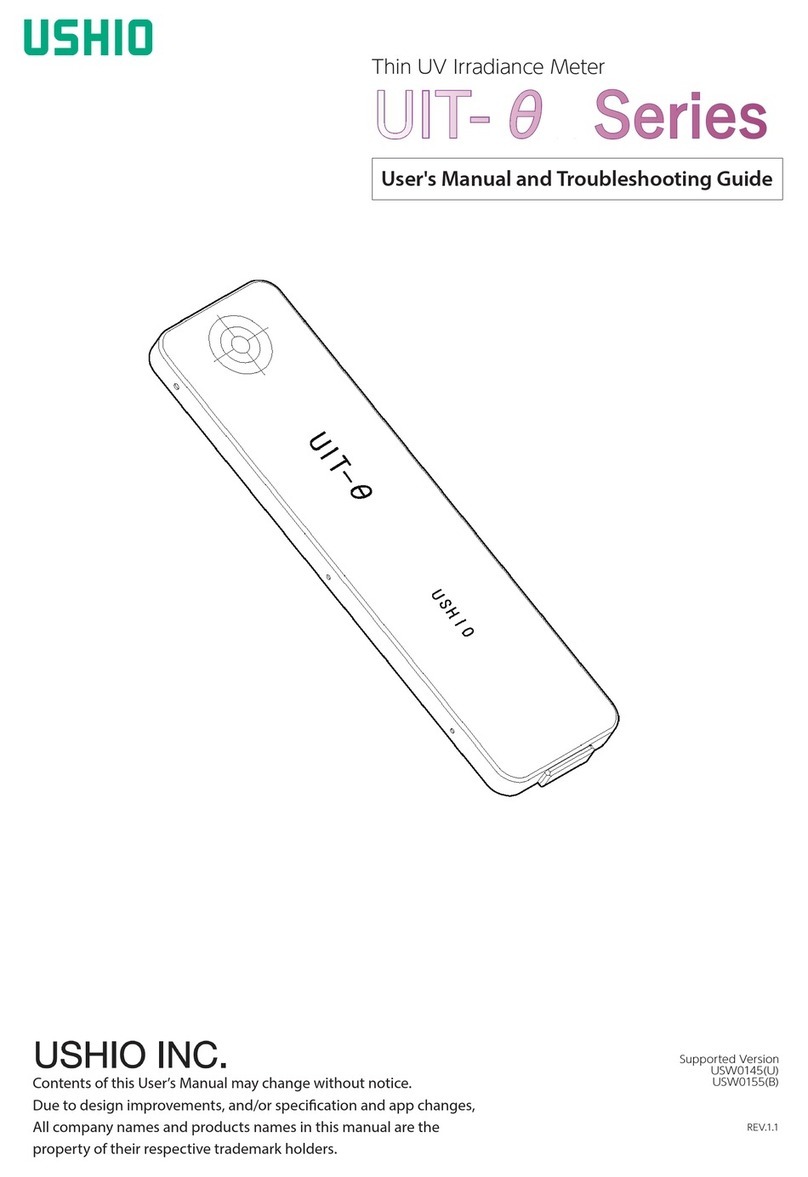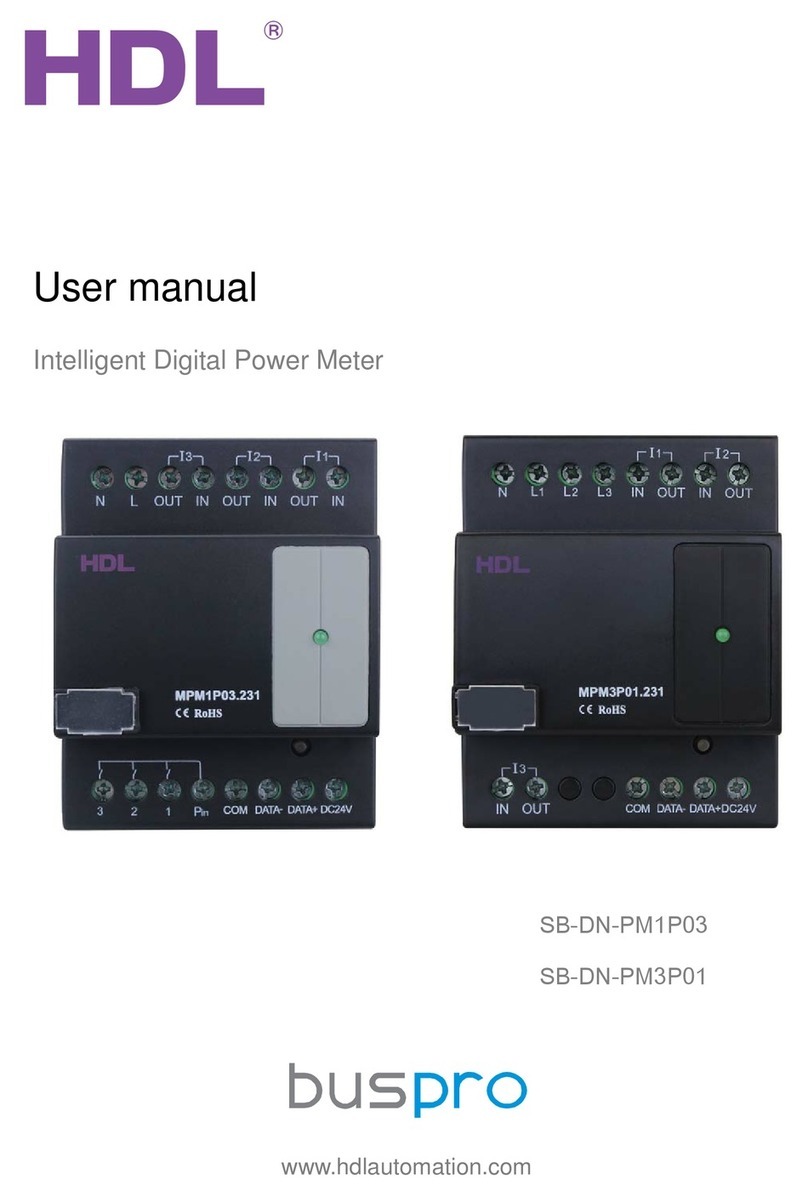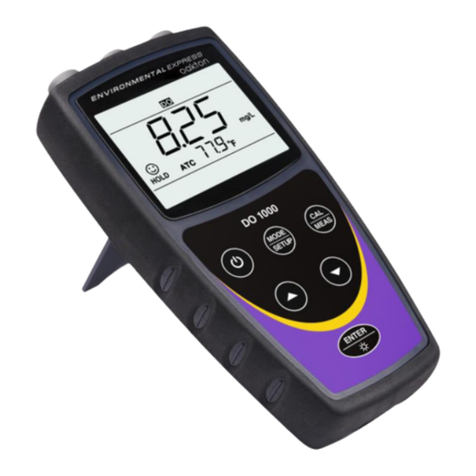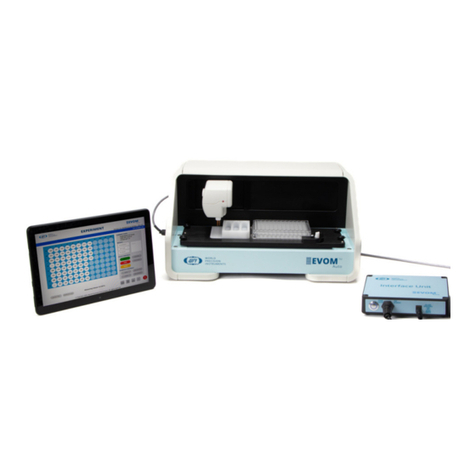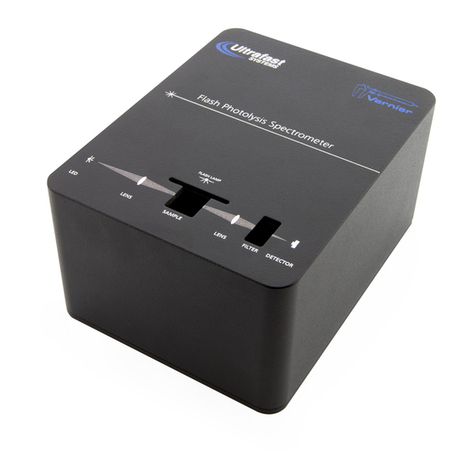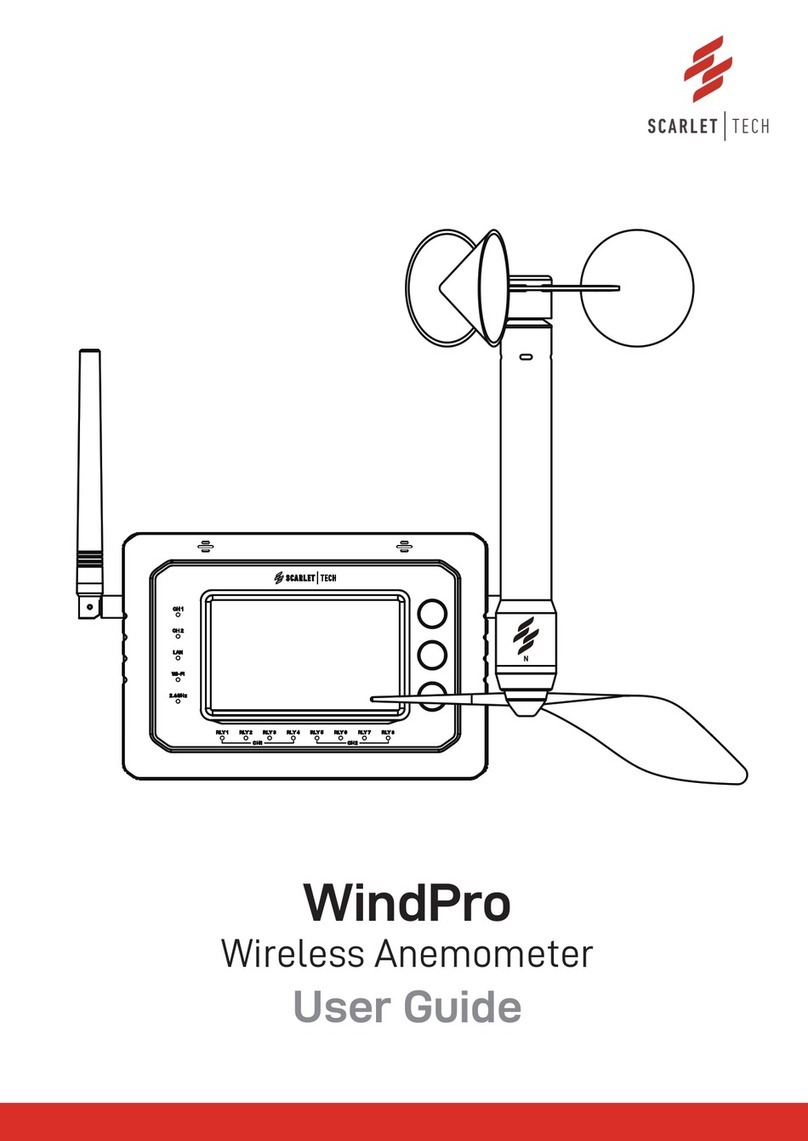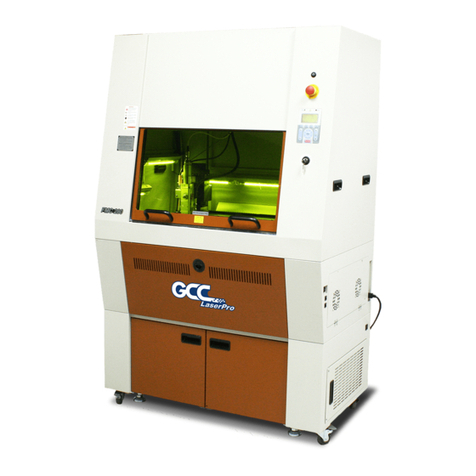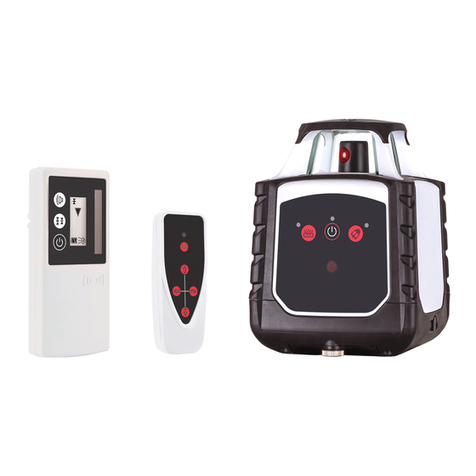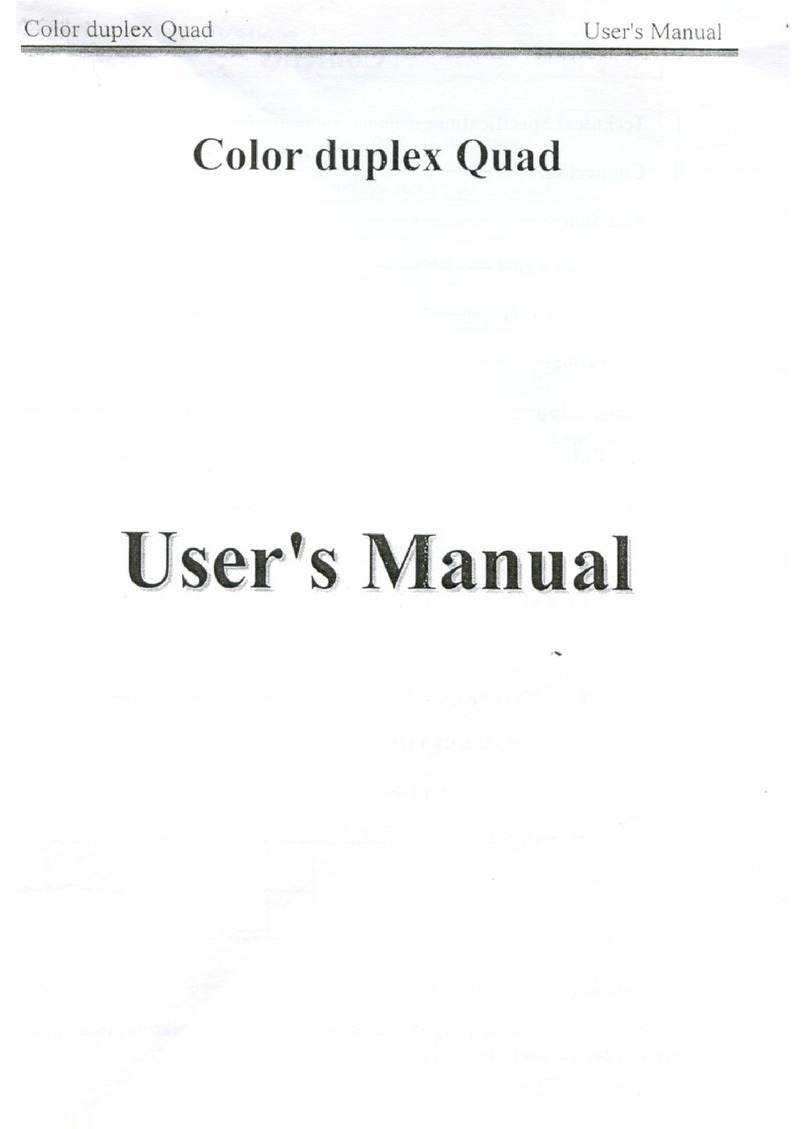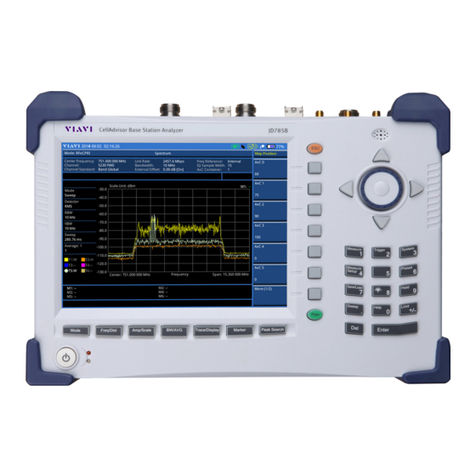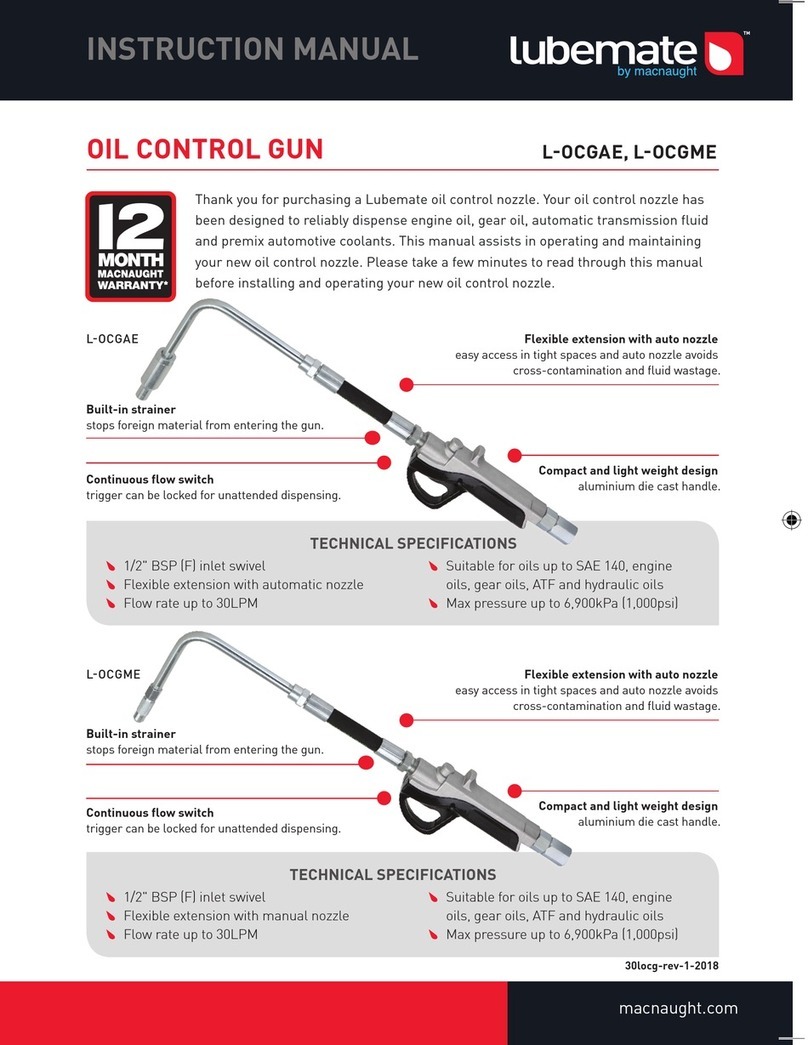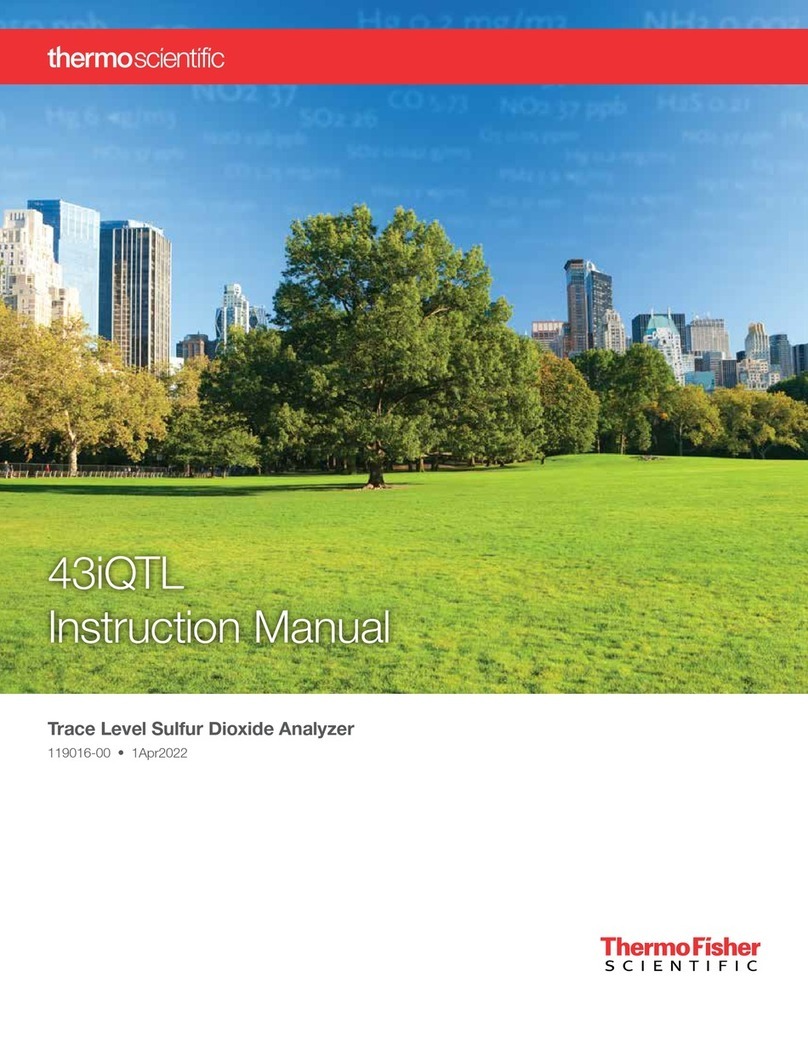Bartington Mag628 User manual

Operation Manual for
Mag628/629 and Mag669
Three-Axis Aerospace Magnetometers

BARTINGTON INSTRUMENTS
Page 2 of 13 OM2808/3
Table of Contents
1. About this Manual 3
1.1. Symbols Glossary 3
2. Safety Instructions 3
2.1. Important Information 3
2.2. Hazardous Materials 3
2.2.1. Applicability 3
3. Introduction to Mag628, Mag629 and Mag669 4
3.1. Vector Measurements and Conventions 4
4. Installing the Mag628, Mag629 and Mag669 5
4.1. Siting the Magnetometer (Environment Recommendations) 5
4.2. Connection Recommendations 6
4.2.1. Cables and connections 6
4.2.2. Pre-Installation Tests 7
4.3. Mounting Recommendations 8
4.4. Installation 8
4.5. Post Installation Testing 9
5. Using the Mag628, Mag629 and Mag669 9
5.1. Operation 9
5.2. Magnetic Hysteresis 9
5.3. Environmental Precautions 9
6. Troubleshooting 10
7. Care and Maintenance 11
7.1. Cleaning the Mag628, Mag629 and Mag669 11
7.2. Calibration 11
8. End of Life Disposal 12
8.1. Waste Electrical and Electronic Equipment (WEEE) Regulations 12

BARTINGTON INSTRUMENTS
Page 3 of 13 OM2808/3
1. About this Manual
This document describes the installation, operation and maintenance of the Mag628, Mag629
and Mag669 three-axis aerospace magnetometers.It should be read in conjunction with product
brochure DS2808, which can be found on the product page on the Bartington Instruments
website at www.bartington.com.
Note that failure to follow the instructions in this manual may invalidate your product’s warranty.
If in doubt, do not hesitate to contact Bartington Instruments.
1.1. Symbols Glossary
The following symbols used within this manual call your attention to specific types of
information:
WARNING: Indicates a situation in which serious bodily injury or death could result if the
warning is ignored.
Caution: Indicates a situation in which bodily injury or damage to your instrument, or both,
could result if the caution is ignored.
Identifies items that must be disposed of safely to prevent unnecessary damage to the
environment.
Note: A note provides useful supporting information and sometimes suggests how to make
better use of your purchase.
2. Safety Instructions
2.1. Important Information
Note: Early versions of the Mag629 used a Hexavalent Chrome (Cr(VI)) conformal coating,
with an epoxy outer layer. The Cr(VI) coating has been phased out as a result of the
changing requirements of environmental legislation. See Hazardous Materials.
2.2. Hazardous Materials
2.2.1. Applicability
Note: Warnings about the hazards of contact with Hexavalent Chrome (Cr(VI)) apply only
to Mag629 magnetometers with serial numbers from 1 to 33 inclusive. No other Mag629s
contain Cr(VI).

BARTINGTON INSTRUMENTS
Page 4 of 13 OM2808/3
WARNING: The casing of the Mag629 electronics module is constructed from chromate
coated aluminium, which is then covered with pale grey epoxy. The grey paint covering
prevents contact with the chromate coating as this may contain up to 4 milligrams of
Hexavalent Chrome (Cr(VI)) per instrument. Hexavalent Chrome is considered a serious
hazard to human health, particularly if inhaled or ingested.
WARNING: Under no circumstances should the electronics enclosure be deliberately
modified, for example by sanding, drilling, abrading, machining, etc. as this could
potentially cause a risk to health.
WARNING: If a Mag629 electronics module has been damaged to the extent that the
grey epoxy coating has been penetrated, avoid contact and consult your local hazardous
materials handling expert. Familiarise yourself with current best practice in dealing
with hazardous materials, in particular the use of the correct PPE (Personal Protective
Equipment).
WARNING: Under no circumstances should the electronics enclosure be disposed of in
normal waste. Dispose of hazardous waste according to local regulations.
3. Introduction to Mag628, Mag629 and Mag669
The Mag628, Mag629 and Mag669 three-axis fluxgate magnetometers are designed specifically
to meet the environmental requirements of aerospace applications, with applications such as
vector compensation in airborne magnetometry. Refer to the product brochure for specifications.
The two-part construction consists of a sensor head assembly with integrated cable and
a separate electronics module. The sensing head contains the three concurrently sensing
fluxgates arranged along X, Y and Z axes. The electronics module carries processes and outputs
the signals, and also provides a monitor signal output to warn of power supply faults.
The sensor head is fully sealed and may be installed in exposed situations. It and the Mag629
electronics enclosure can withstand high levels of shock and vibration, dust, humidity, corrosive
atmospheric conditions, acoustic noise and electromagnetic fields, whilst operating within a wide
range of both temperatures and pressures.
The electronics of Mag628 and Mag669 are un-encapsulated and must be installed within the
customer’s electronics enclosure to provide environmental and EMC protection.
3.1. Vector Measurements and Conventions
Each magnetometer produces three independent analogue output voltages in response to the
magnitude and direction of the orthogonal components of a magnetic field. A ‘right-hand’ co-
ordinate system is adopted. In this system the X, Y and Z axis correspond to the thumb, first and
second finger respectively of the right hand. By convention, the magnetometer should be

BARTINGTON INSTRUMENTS
Page 5 of 13 OM2808/3
installed so that the X axis points north, or towards the front of the vehicle; the Y axis points east,
or towards the right side of the vehicle; and the Z axis points down.
Figure 1. The ‘right hand’ rule.
The centres of the three vector sensors are superimposed; each orientation is denoted on the
sensor head engraving. The point of each vector arrow indicates the positive direction of each
axis.
4. Installing the Mag628, Mag629 and Mag669
4.1. Siting the Magnetometer (Environment Recommendations)
In whatever situation the Mag628, Mag629 or Mag669 is to be installed it is important to avoid, or
compensate for, local magnetic effects. In general:
• Site the magnetometer several tens of metres from very large ferromagnetic objects that
could become magnetised and create fields exceeding the measuring range of the sensor.
• Avoid siting the sensor near any ferromagnetic objects that may be subjected to the effects
of magnetic hysteresis, which would affect the sensor in an unpredictable manner.
For these reasons, a magnetic evaluation of any proposed installation site should be conducted
to establish that it is free from magnetic contaminants. It is recommended that such an
evaluation be carried out using total field or resonance magnetometers.
North
+X
Thumb
Down
+Z
2nd Finger
East
+Y
1st Finger

BARTINGTON INSTRUMENTS
Page 6 of 13 OM2808/3
4.2. Connection Recommendations
4.2.1. Cables and connections
Note: Cables are particularly prone to wear and damage if twisted, flexed beyond their
design limits, or subjected to excessive or repeated movement. It is recommended
that all cables are mounted securely in place. For further details refer to Mounting
Recommendations.
Mag628 and Mag669
Note: The sensor head cable is supplied without a connector. The customer must provide
the connection between the sensor head cable and the electronics assembly. Connection
details are provided in outline drawing DR2591, available from Bartington Instruments.
Mag629
Note: The cable between the sensor head and electronics module of the Mag629 is an
integral part of the sensor head and cannot be modified except at Bartington Instruments.
Note: To connect your Mag629 to a data acquisition unit via a recommended mating
connector, you will need to refer to outline drawing DR2591 for cable and connector details,
pinouts, etc.
Interface
The electronics assembly is plugged directly via PL1 and PL2 onto the customer’s electronics
PCB (motherboard) using connectors and screws detailed in outline drawing DR2591.
Power supplies
Caution: Power is supplied by the customer as per the product brochure. Current is
specified in the product brochure. There is no protection on the electronics assembly;
the customer must ensure that the correct voltages are provided on the motherboard
connectors.
Signals and ground
The 0V (ground) for the unit is applied to PL1 4, 5 ,8 and 10 alongside the power supply.
Note: The ground voltages on PL2 pins 1 and 5 are the returns for the sensor excitation
and detection respectively; they are connected on the electronics PCB and should not be
connected to the 0V plane of the customer’s motherboard.
PL2 pin 9 is used to detect if the sensor head is connected; it is connected to pin 5 through the
sensor head wiring. When sensor is connected, pin 9 is grounded and the test signal is cleared.

BARTINGTON INSTRUMENTS
Page 7 of 13 OM2808/3
4.2.2. Pre-Installation Tests
Mag628 and Mag669
Prior to the assembly of the system the connection to the motherboard must be checked as
follows:
1. Check the power supply voltages to be ± 15V (± 5%) using a voltmeter.
2. Ensure each sensor head lead is connected to the correct pin on the electronics assembly;
see outline drawing DR2591 for details. Wiring and connectors are supplied and fitted by
the customer.
Mag629
Prior to the installation of the system, the magnetometer, cable and power supply must be fully
tested to ensure correct function as follows:
Caution: Take care to avoid bending, or otherwise damaging the contacts whilst conducting
the tests.
1. Test the cables for continuity (using an electrical continuity tester or ohmmeter).
a. Test the cables end to end at the connectors to ensure the correct pins have been
allocated to the conductors and there are no open or high resistance circuits.
Note: Cable resistance will vary; refer to the product brochure for the expected values.
b. Test the cables at the connectors to ensure there are no short circuits between the
conductors.
2. Check the power supply output voltage using a voltmeter. Refer to the product brochure
for the expected values.
3. Check no dust or obstructions have fallen into the cable connector or its socket and clean
if necessary using an air duster.
4. Connect the sensor head and integrated cable to the electronics module. The two
connector sockets on the electronics module are different to ensure correct connection.
The connector can only be installed in one orientation. Hand-tighten the securing collar.
5. Connect the magnetometer to the cable connector.
6. Connect the power supply to the other cable connector.
7. Switch on the power supply and confirm that the monitor line output is high.
8. For each of the three (X, Y and Z) axes in turn:

BARTINGTON INSTRUMENTS
Page 8 of 13 OM2808/3
a. Connect a voltmeter to the axis sensor outputs, i.e. across signal X and common.
b. Whilst monitoring the voltmeter readings, align the magnetometer with the
terrestrial field.
c. Confirm the measured readings approach the local geomagnetic field value.
Note: Geomagnetic field values can be provided by your local magnetic observatory. A
margin of error due to local disturbance should be taken into account.
4.3. Mounting Recommendations
Each magnetometer sensor head and electronics module has a set of mounting holes to allow
attachment to a stable base or fixture. Refer to the mechanical drawings on the product page on
the Bartington Instruments website.
The sensor can also mounted on the Bartington Instruments Mag-TA Tripod Adaptor using the
Mag-TA Product Adaptor mounting plate. See datasheet DS3140 for instructions on how to do
this.
Caution: Once the sensor head and electronics module have been installed as required,
route the sensor cable so that the minimum bend radius is 75mm (3 inches) in the most
flexible plane (see Connection Recommendations). Once in place, secure the cable at
sufficient points along the length of the cable to avoid excessive flexing.
Caution (Mag629): Take care to align the cable to the connector correctly, to avoid damage
to the connector or magnetometer. When aligned correctly, hand-tighten the connector
collar. Refer to the product brochure for detailed information.
4.4. Installation
1. Site the magnetometer, and install the power supply and cabling.
2. Switch on the power supply and wait until the magnetometer has stabilised.
3. Confirm no magnetic objects are moving in the vicinity.
4. Monitor the sensor outputs.
5. Confirm that the ‘test’ output is high.
6. Confirm that the sum of the measured magnetic field vectors is similar to the expected
local earth field.
Note: The outputs from the sensor should remain stable to within the quoted noise limits.
Refer to the product brochure for the expected values.

BARTINGTON INSTRUMENTS
Page 9 of 13 OM2808/3
4.5. Post Installation Testing
When the sensor and electronics are installed and power is applied, the following checks can be
made:
1. The ‘test’ output (Mag628 and Mag669: PL1 pin 9) is open circuit (normally pulled to a
positive voltage by a resistor).
2. Each of the analogue outputs will register a voltage equivalent to the earth’s magnetic
field. The level on each channel will vary depending on sensor head orientation between
equal positive and negative maximum values of approximately 6V corresponding to typical
earth field.
5. Using the Mag628, Mag629 and Mag669
5.1. Operation
The sensor functions immediately after power is supplied, providing an analogue voltage on each
of three channels in response to the applied magnetic field.
5.2. Magnetic Hysteresis
The Mag628, Mag629 and Mag669 are designed to have an extremely low magnetic hysteresis.
However, Bartington Instruments recommends your magnetometer is not subjected to magnetic
fields greater than their stated measuring range for extended periods as this could alter the DC
offset. If this occurs, the offset will exhibit drift as it returns to its original offset specification.
Caution: Subjecting the magnetometer to fields in excess of 2 x the nominal range may
cause inaccuracy in future measurements. Degaussing the magnetometer can reverse
such an effect.
5.3. Environmental Precautions
Refer to the product brochure for maximum environmental electrical and mechanical ratings.
Caution: Exceeding the maximum environmental ratings may cause irreparable damage to
your sensor.

BARTINGTON INSTRUMENTS
Page 10 of 13 OM2808/3
6. Troubleshooting
Your Mag628, Mag629 or Mag669 are unlikely to suffer any defects in normal use. Neither the
electronics nor the sensor head are user serviceable. As the sensor head and the electronics
assembly are matched, in the event of damage to either, return both to Bartington Instruments.
Mag628 and Mag669 customers should supply (details of) a mating connector to allow
Bartington to make connection between sensor head and electronics connector; otherwise the
customer’s connector will have to be permanently removed to allow servicing to be carried out.
The most likely causes of failure for Mag628, Mag629 and Mag669, and their solutions, are
detailed in the following table:
Function Failure Symptom Failure Cause Failure Analysis/
severity and
solution*
Output signals for
one or more axes.
Output floats to
saturation (close
to supply rails).
Severance or
uncoupling of sensor
head to electronics
unit cable.
Major failure –
will immediately
be detected by
operator.
Output goes high
impedance.
Loss of
power to the
magnetometer.
Check connections
to sensor head
(Mag628, Mag629
and Mag669) and/
or voltages on
PL1 (Mag628 and
Mag669 only).
Ensure the cable
length is not too
long, causing
excessive voltage
drop between the
power supply and
magnetometer.
Refer to the
specifications
defined in the
product brochure.
Output becomes
0V.
Internal
component failure.
Return to
Bartington
Instruments for
servicing.

BARTINGTON INSTRUMENTS
Page 11 of 13 OM2808/3
Test signal:
PL1 pin 9 (Mag628
and Mag669) or
J1 pin J (Mag629)
usually pulled up
through a resistor
to a positive
voltage, e.g. 10k to
+5V.
Test pin is high
impedance when
OK; sinks up to
10mA to GND/0V
when fault is
detected or unit is
not powered.
Severance or
uncoupling of
sensor head to
electronics unit
cable.
Major failure –
will immediately
be detected by
operator.
Loss of
power to the
magnetometer.
See above.
Internal
component failure.
Return to
Bartington
Instruments for
servicing.
7. Care and Maintenance
No user repair or servicing is possible. For further details refer to the section on
Troubleshooting.
7.1. Cleaning the Mag628, Mag629 and Mag669
Use water and mild soap to remove grime from external surfaces.
Caution: Never use chemicals, such as solvents, when cleaning the sensor head or Mag629
enclosure.
Caution: Take particular care when cleaning around electrical connections. Bent or
damaged pins may cause the magnetometer to malfunction. Use an air duster to blow out
dust and debris if required. Use appropriate PPE, such as eye protection, when carrying
out this task.
7.2. Calibration
Return the Mag628, Mag629 or Mag669 to Bartington Instruments for calibration at the
recommended intervals. Refer to the Calibration Certificate for further details.

BARTINGTON INSTRUMENTS
Page 12 of 13 OM2808/3
8. End of Life Disposal
WARNING: Under no circumstances should the electronics enclosure be disposed of in
normal waste.
See the Safety Instructions for warnings concerning early models of Mag629.
8.1. Waste Electrical and Electronic Equipment (WEEE) Regulations
At the time of writing, the Mag628, Mag629 and Mag669 comply fully with current RoHS
(restriction of the use of certain hazardous substances in electrical and electronic equipment)
regulations, but this manual retains WARNING information as a reference for users of the earlier
versions of Mag629 (specified by Serial Number in the section on Hazadous Materials later in
this manual).
This product (electrical and electronic equipment) should not be placed in municipal waste.
Check local regulations for disposal of electronic products.

OM2808/3
The copyright of this document is the property of Bartington Instruments Ltd.
Bartington® is a registered trade mark of Bartington Instruments Limited in the following countries:
United Kingdom, Australia, Brazil, Canada, China, European Union, India, Japan, Norway and the
United States of America.
Bartington Instruments Limited
5 Thorney Leys Business Park,
Witney, Oxford, OX28 4GE, England.
www.bartington.com
T: +44 (0)1993 706565
F: +44 (0)1993 774813
E: sales@bartington.com
This manual suits for next models
2
Table of contents
Other Bartington Measuring Instrument manuals
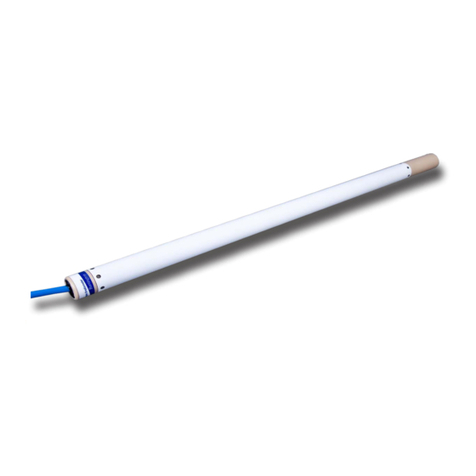
Bartington
Bartington Grad-13 Series User manual

Bartington
Bartington Mag690 User manual

Bartington
Bartington Mag-01H User manual
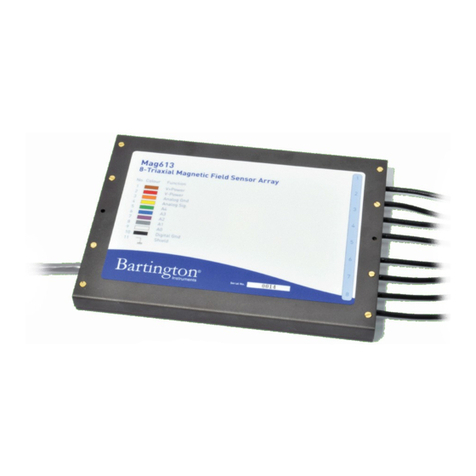
Bartington
Bartington Mag613 User manual

Bartington
Bartington MS3 User manual
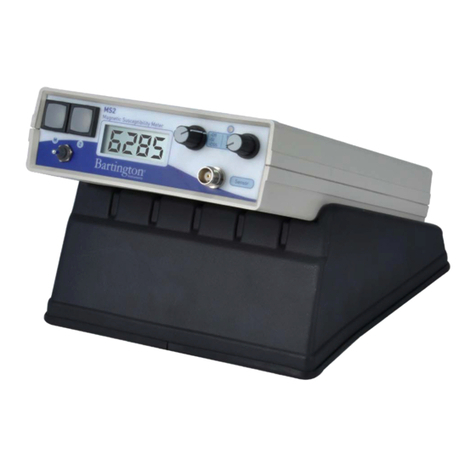
Bartington
Bartington MS2 User manual
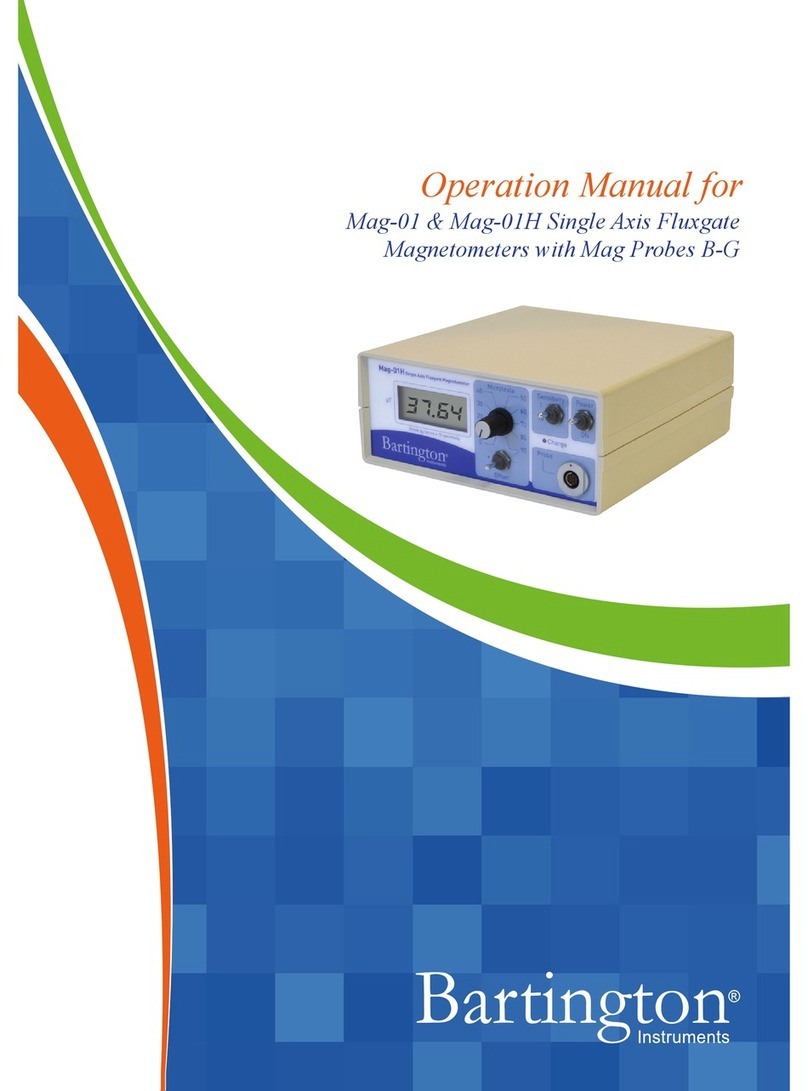
Bartington
Bartington Mag-01 User manual
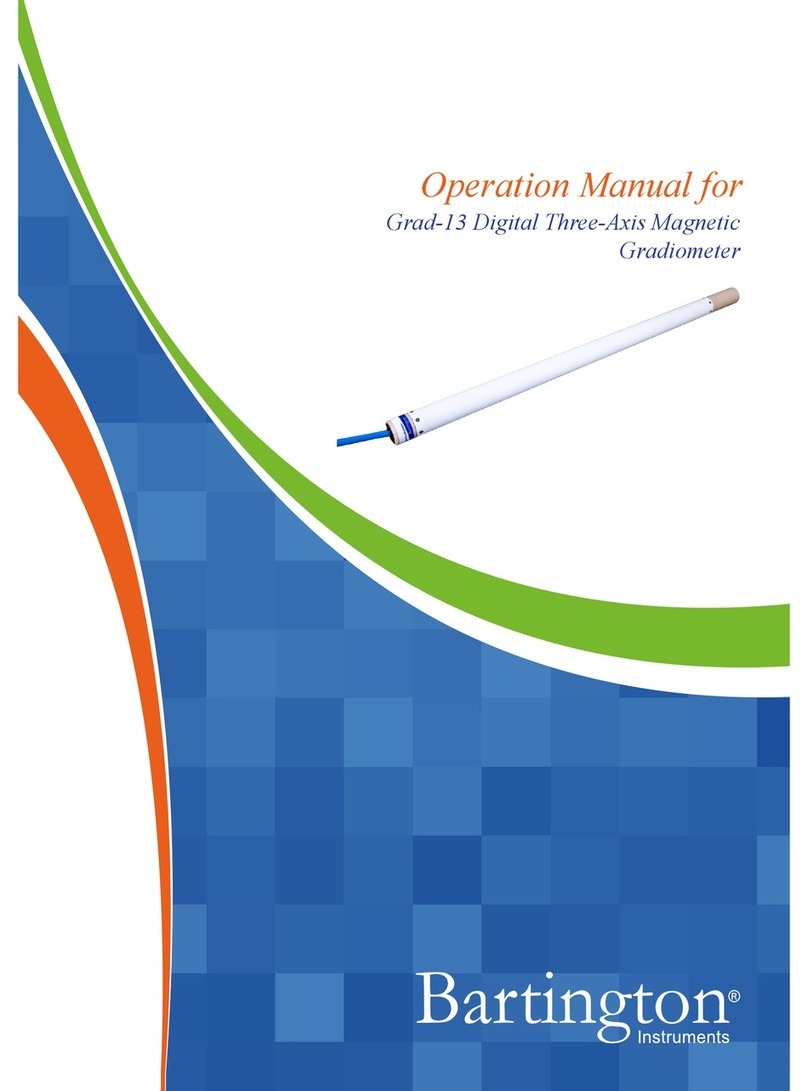
Bartington
Bartington Grad-13 Series User manual

Bartington
Bartington Mag-01 User manual
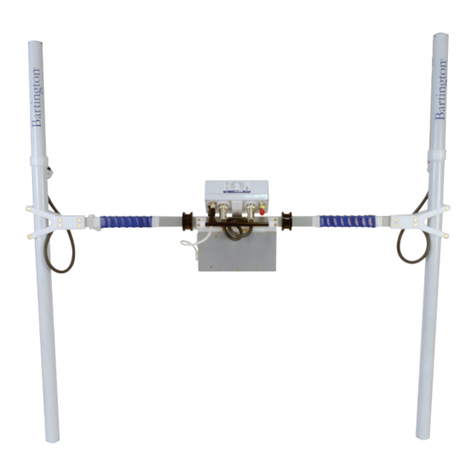
Bartington
Bartington Grad601 User manual


